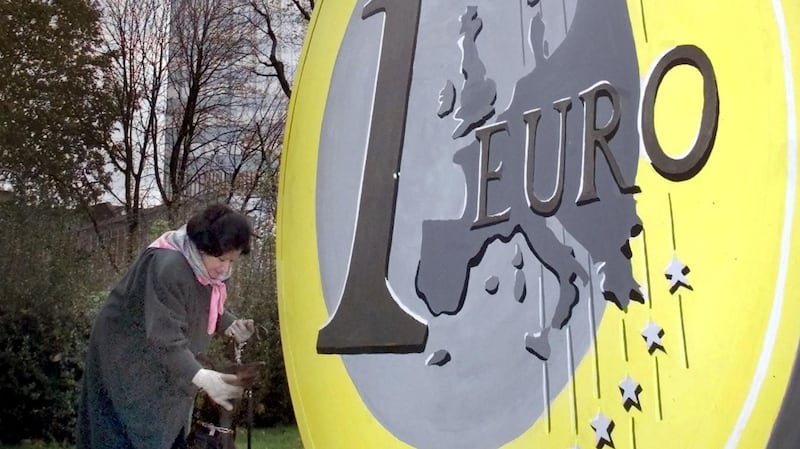The battle for international dominance between the dollar and the euro has been one that has lain dormant for much of the single currency’s 20-year existence.
In his 2018 "State of the Union European Parliament" address in September, European Commission president Jean-Claude Juncker put it back on the agenda, saying the commission would seek to strengthen its international role
It did so on December 5th. Efforts would be made to strengthen the euro as a foreign policy tool, but also to reap economic and commercial advantages for European businesses on the back of its greater use internationally.
Greater use of a currency in international transactions reduces transaction costs for domestic users and would make them less vulnerable to exchange rate shocks.
The predominant use of the dollar in international finance has also allowed US banks to extract so-called denomination rents, by having easy access to dollar liquidity and channelling it globally.
A more attractive euro as a safe store of value can also contribute to reducing the interest rate demanded by investors.
In the first 20 years of its existence, the euro has consistently been the second most-used international currency, while the dollar has maintained the first position it has held since the second World War.
The EU accounts for about 17 per cent of global gross domestic product and the euro area’s share is about 12 per cent, but far larger in terms of currency use.
Sixty other countries and territories around the world, home to some 175 million people, have chosen to use the euro as their currency or to link their own currency to it, in one way or another.
Commodity trade
The gap between the dollar and the euro is greatest in the invoicing of commodity trade and as vehicle for foreign exchange transactions, and smallest in cross-border payments.
Sixty other countries and territories around the world have chosen to use the euro or to link their own currency to it
More broadly, the euro is the currency of choice in some 36 per cent of international payments to the dollar’s 40 per cent, while the latter represents 62 per cent of international holdings of foreign exchange reserves, to the euro’s 20 per cent.
How then to step up the euro to become the reserve currency on a world scale?
It’s certainly not done by diktat – while the EU has said that it will encourage market players in the energy sector to denominate their trades in euro, it will be market forces and the appeal of the euro that will make the shift.

Currently, the EU is the world’s largest energy importer, with an annual energy import bill averaging €300 billion in the last five years. About 85 per cent is paid in US dollars, and a switch in this area alone would make a substantial difference to the euro’s international standing. But what the commission argues will be critical to the image and appeal of the single currency is the completion of the complex support mechanism that is economic and monetary union, particularly banking union.
These are the challenges faced by EU leaders over the next six months. While there is agreement on much of banking union, notably the backstop for the single resolution fund to prevent big bank failures from toppling the system, little progress has been made on the deposit insurance mechanism.
In the broader area of strengthening the euro zone, agreement has been reached on an expanded role for the exchange rate mechanism in managing crises in individual states, but difficulties remain between conservative northern states and the south, led by France, in developing a euro-area budget as a stabilising mechanism.
World stage
Progress in all these areas will be crucial to upgrading the resilience of the euro to become “the international reserve currency”.
A strengthened European political standing on the world stage would certainly enhance the euro’s appeal, but whether that requires arming Europe would be disputed by Dublin.
A strengthened European political standing on the world stage would certainly enhance the euro's appeal
In the end, the value of a currency is a reflection, a measure by the rest of the world, of the strength of the polity that issues it. The euro’s strength, as much as the dollar’s and the yen’s, sterling’s weakness.
The continued onslaught of the Trump administration on multilateral institutions and the tools of international co-operation has posed important strategic issues for the European Union in trade and security.
Robust self-sufficiency is very much the order of the day, and nowhere more so than in the management of its own currency, the euro, now 20 years old, in defence of the union’s financial and political autonomy.
Washington's intention, against the wishes of the majority of the international community, to use the dollar financial and economic system against European companies that continue to have commercial relationships with Iran is very much a case in point.
The EU is determined to maintain the relationship with Iran and is trying to develop a system to bypass the US-controlled clearing banks.
The prospects of both Europe and the euro are inextricably intertwined.
SERIES CONCLUDED











